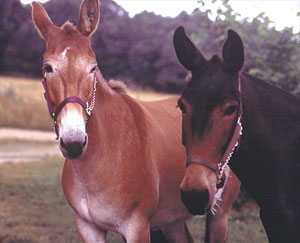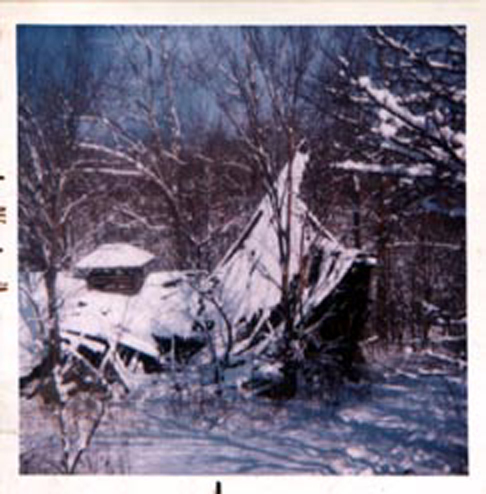Mules Welcome
"...After its introduction to the state in the 1820s, the mule
quickly became popular with farmers and settlers
because of its hardy nature. Missouri mules pulled pioneer wagons to the Wild West during the 19th century and
played a crucial role in moving troops and supplies in World Wars I and II..". From
Missouri's State Animal
 The Missouri Mule, once legendary, has fallen from favor along with the U.S. Cavalry [Disclaimer: former Valle Mining
Company president, the late Major General William H. Harrison, joined the Cavalry at Missou where he began his
military career with horse-drawn cannon. He attended the U.S. Army Field Artillery School (USAFAS) in Fort Sill, OK
which later attracted the attention of Gen. George Patton when he assembled his 3rd Army, ETO. He made Harrison his
youngest general staff officer.]
The Missouri Mule, once legendary, has fallen from favor along with the U.S. Cavalry [Disclaimer: former Valle Mining
Company president, the late Major General William H. Harrison, joined the Cavalry at Missou where he began his
military career with horse-drawn cannon. He attended the U.S. Army Field Artillery School (USAFAS) in Fort Sill, OK
which later attracted the attention of Gen. George Patton when he assembled his 3rd Army, ETO. He made Harrison his
youngest general staff officer.]
In 1995 the Missouri mule was designated as
the
official State animal. Some have chosen to keep the tradition of this sturdy animal alive and tack and
gear for them is still available. Many are fond of
this unusual animal and even show
their Zebra Hybrids and 'Zorses'.
The last mule to work on the property belonged to the late Tom Jarvis, our logger in
1986, who used a pink-nosed mule to skid logs out of tight places in the forest and to
help position the sawlogs for easier loading onto the log trucks on the landings. Fortunately,
just as we were getting lonely for more mules, we were visited not too long ago by
Mr. Larry French who was kind enough to bring his mule wagon and mules to visit.
Our old Mule Barn at 14160 Valles Mines School Road
 Shown right, our old Mule Barn. This picture was
taken in 1978 in the heart of Winter and in collapse but the stone foundation remains to
this day showing the layout of the stalls and corn crib.
Shown right, our old Mule Barn. This picture was
taken in 1978 in the heart of Winter and in collapse but the stone foundation remains to
this day showing the layout of the stalls and corn crib.
We have uncovered a lot of the stone foundation and layout of the stalls.
Maybe someday it will come back to life again.
Historically, though, according to
Historian Steve, the barn had a very wide stairs
up to the hayloft where several people could walk abreast. Once a year in Fall, the women would
sweep the place spotlessly clean and his grandmother would take their team and
wagon down to the railroad depot where everyone would pitch in to buy bales of cotton off the train. Then
they would bring them back to the hayloft where the women would spend days if needed to
make all the pillows and comforters everyone would need for winter and the next year. The men
were encouraged to stay out of the way (read: moonshine time) until this crucial work was done.